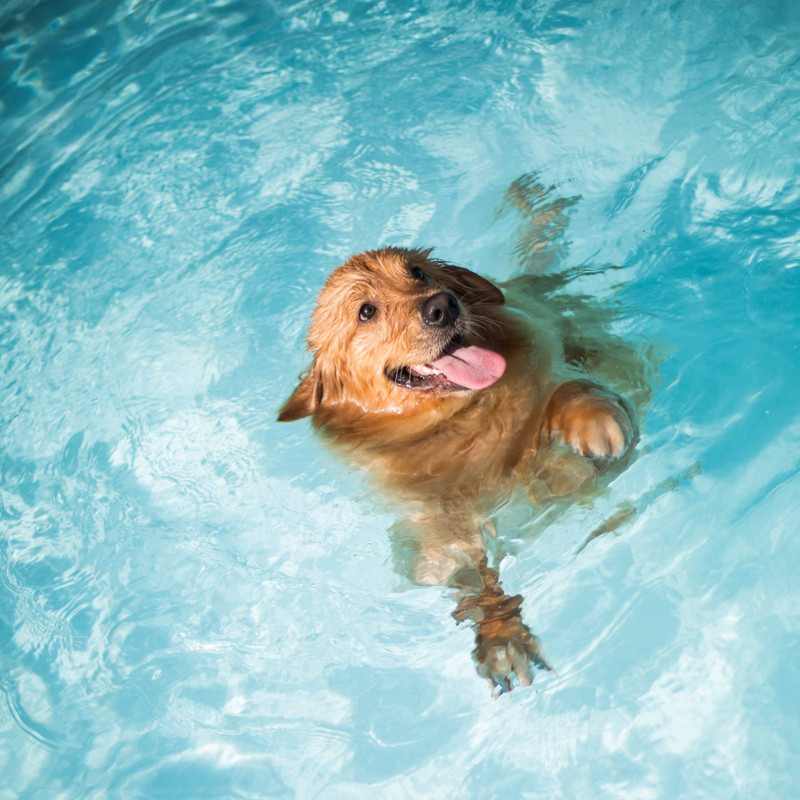How to Protect Wildlife & Pets from Pool Drowning Hazards
May 24th 2024

Your swimming pool acts like a magnet, luring family and friends looking for a cool dip. However, it can just as easily attract wildlife and pets.
Swimming pools pose a danger to wildlife. Small animals – especially curious animal babies – may fall in and not be able to get out again, notes the Humane Society of the United States.
If you have pets, how do you keep them safe around the pool? And how do you prevent pool accidents with local wildlife?

Teach Pets How to Swim
Nevertheless, if your cat or dog accidentally falls into the pool - especially if you’re not nearby - there’s a better chance of them staying afloat until help arrives if they know how to swim.
Also, make sure they know how to get out of the pool again. For pets that are poolside regulars, consider using an animal life vest and learning Pet CPR.

Take Care of Special Needs Pets
The best way to keep your dog out of the pool is a good, solid fence and/or hard surface pool cover. A dog swim vest can provide additional reassurance.

Are There Frogs in Your Pool?
Fences, pool covers and ramps are helpful in preventing accidents with wildlife. Consider a small escape ramp to help frogs, mice, birds and other small animals escape. Also, pick up any poolside food spills and trash that might attract little creatures.

Put up Fences

Use a Pool Cover
Covers are also handy for keeping leaves and other debris out of your pool to help minimize the time you spend cleaning.

Invest in Safety Accessories
Lounge ledges built into the pool, or knotted nylon ropes secured to the pool edge at the water’s surface, can provide a refuge or escape for animals that fall into your pool.
In addition, there are many products on the market to help keep wildlife out of your pool, or to help them escape safely if they do fall in.
Some dogs are eager to jump into the water but can’t climb back out onto the pool deck or ledge on their own. What’s more, waterlogged fur can add extra weight and make getting out of the pool even more challenging. Pet ramps - designed mainly for inground pools - make it easier for them to climb out.

Buy a Pool Alarm

Use Animal Life Vests

Take Additional Measures
Consider a variety of deterrents to ward off animals. For instance, some pool owners find it helpful to install sprinklers near the area. Floating alligators and rubber snakes are not just pool pranks. They can help scare away waterfowl that might want to make your pool their home.
Some people also sprinkle, spray or lay natural deterrents around the pool, including cotton balls dipped in ammonia, garlic powder, mint leaves, lemongrass or cayenne pepper spray.

How to Save a Dog from Drowning
It’s natural to want to keep wild animals out of your pool. And, of course, we want to protect pets from accidental drowning. But what if your pet likes to be in the water with you or to relax poolside while you’re swimming?
Whether or not your dog likes to swim, you should know how to react if they accidentally fall into the pool or another body of water.
Ideally, you have taught your pet to swim and find the best place to exit the pool. Teaching your dog to swim is an important and potentially life-saving skill, even if they don’t like the water.
However, what if your pet falls into the pool or ventures out too far into the lake and panics?
First, don’t jump into the water after them. A panicked dog may become aggressive.
Instead, grab a pool safety ring or extend a knotted rope or leaf skimmer - anything they can grab onto that will help you pull them closer to the edge. Alternatively, find a hook or stick to snag the dog’s collar and pull them closer. Grab them by their scruff to help them climb out.
If you must enter the water with the dog, bring something that floats and will support their weight so they can cling to it or climb onto it, recommends Pet MD.
A dog that has experienced near drowning should be checked out by a veterinarian right away. Even if they seem fine immediately after an incident, a dog that has aspirated even a little water can experience life-threatening problems, including pneumonia, up to hours later.

Need help with decorating tips? Choosing the right tree?
Christmas Central Resources

